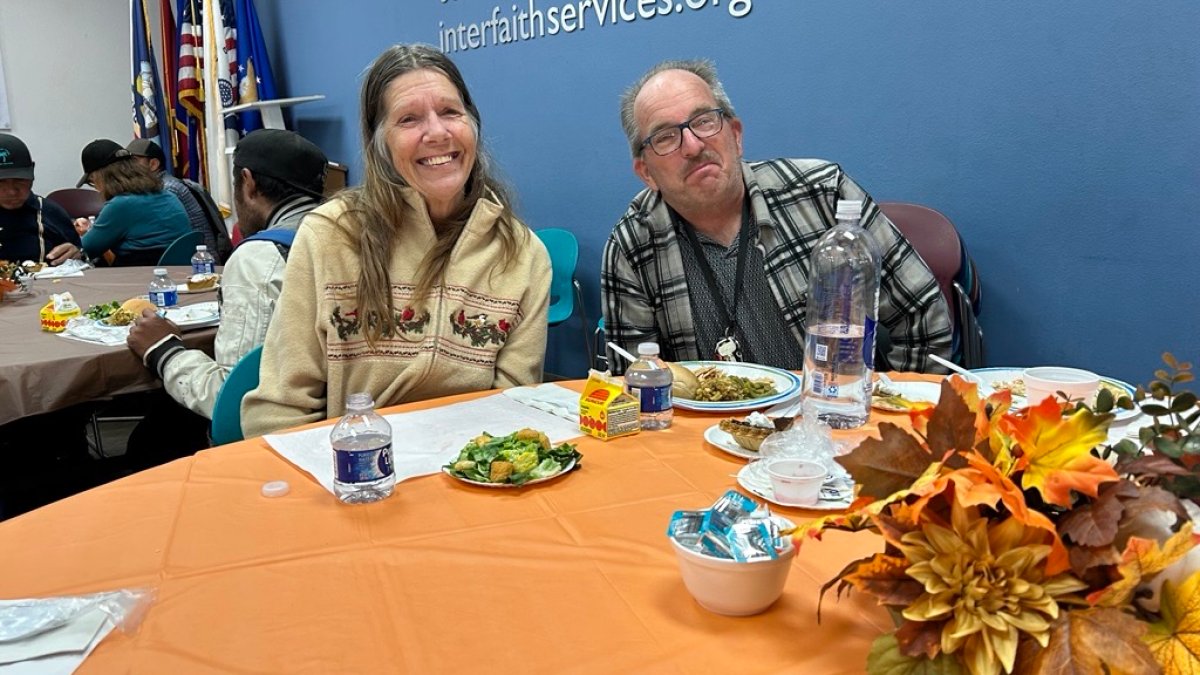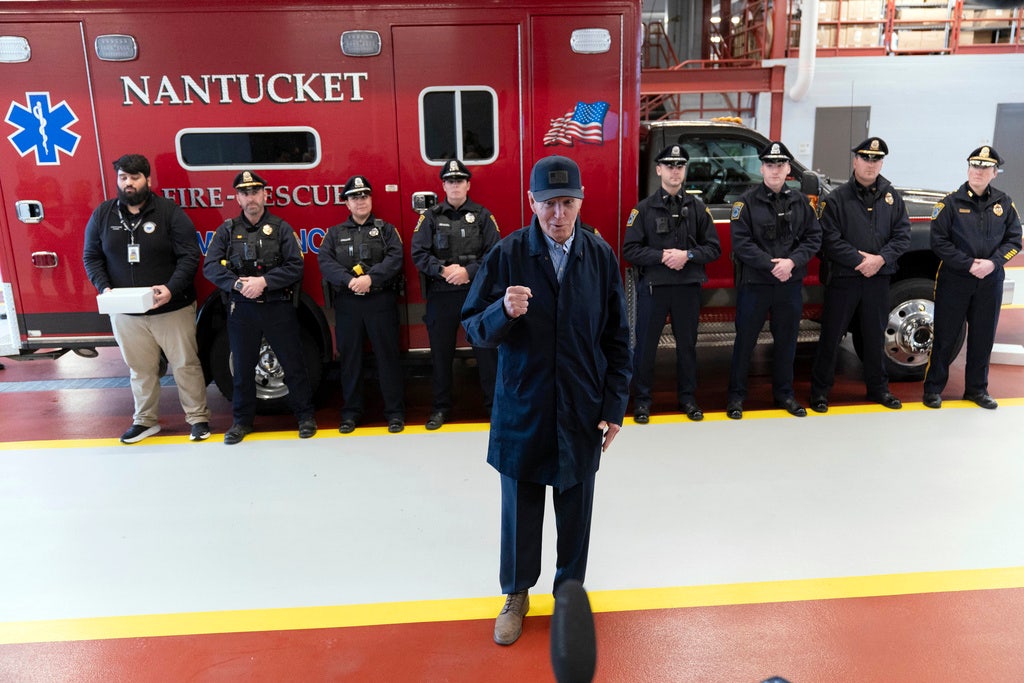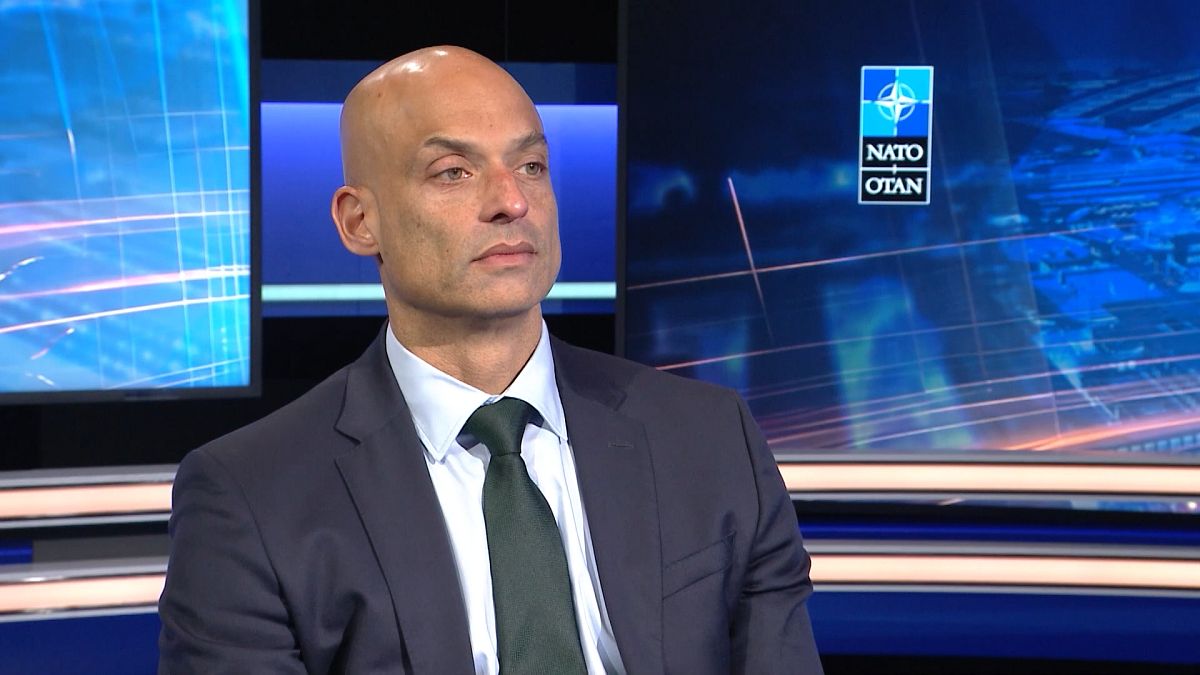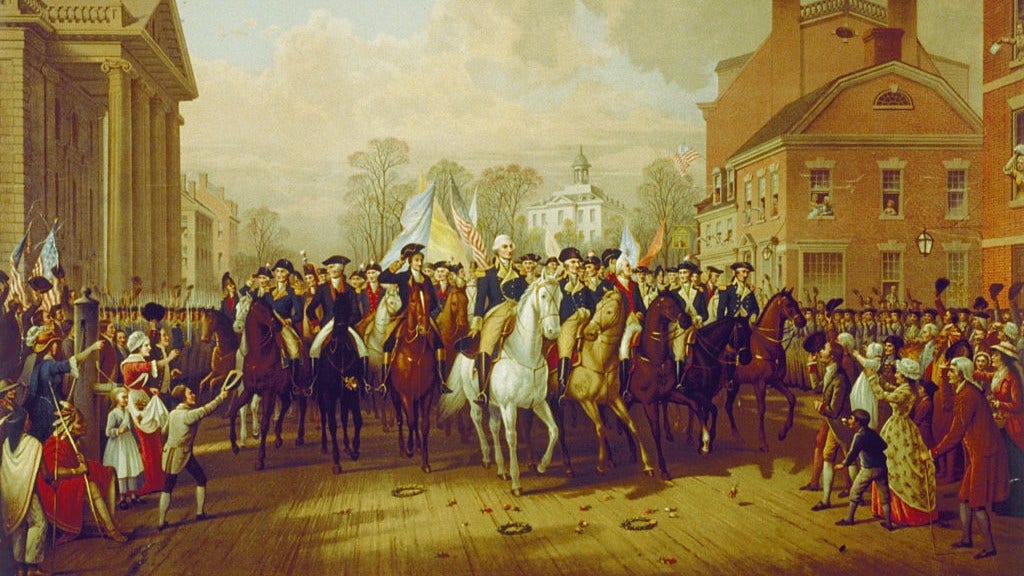Virginia
In Virginia, Alzheimer’s disease is most prevalent in Southside, new study shows

A heat map that visualizes the highest percentages of Alzheimer’s cases blazes red and orange in the southern part of Virginia, based on statistics from a new study released Monday.
“This report shows that the southeast part [of Virginia] has the highest prevalence of Alzheimer’s disease [in the state],” said Jeanne Snyder, community executive with the Alzheimer’s Association of Central and Western Virginia chapter. “It’s higher there because in those regions of Virginia there is a higher percentage of people 65 and older and there’s a higher percentage of Black and Hispanic people.”
Alzheimer’s disease is a type of dementia caused by the breakdown of brain tissue. It affects older people and can result in problems with memory, reasoning, concentration and loss of function.
While no Virginia county hit the Top 10 list for the nation — Florida and California top the list in terms of the total number of people with Alzheimer’s disease — Virginia is among the top states in terms of having areas with a high percentage of people 65 and over with Alzheimer’s disease, with a statewide average of 11.7%.
The report, conducted by a team at Rush Medical College in Chicago, said there is now more of a likelihood that there will be a greater prevalence of people with Alzheimer’s disease and dementia, as the population ages and grows more diverse.
Older Black Americans are about twice as likely to have Alzheimer’s or other dementias as older whites, according to the researchers. And older Hispanics are about one-and-one-half times as likely to have Alzheimer’s or other dementias as older white people, the report said.
Dr. Brian Unwin, section chief for geriatrics and palliative medicine and medical director at Carilion Home Health at the Carilion Clinic Center for Healthy Aging in Roanoke, said Black and Hispanic Virginians are more likely to suffer from Alzheimer’s disease because of other social determinants of health.
“It’s a very complicated topic that intersects health care, including structural racism and community resources that all impact the health of our communities and especially our older adults,” said Unwin. “Those are big factors in caring for patients who have dementia.”
People are also at an increased risk of developing problems with dementia if they are poor, lack education, don’t have health care resources or are disenfranchised in society, Unwin said.
“People who have problem health behaviors of smoking, obesity, have high blood pressure or diabetes — those individuals are more likely to develop problems with dementia than people that don’t have those conditions,” Unwin said.
The localities in Virginia showing a highest prevalence of 65-plus residents with Alzheimer’s dementia are:
- Petersburg: 18%
- Sussex County: 15.5%
- Portsmouth County: 14.9%
- Richmond: 14.8%
- Hampton: 14.8%
- Charles City County: 14.7%
- Franklin city: 14.6%
- Brunswick County: 14.6%
- Prince Edward County: 14.5%
- Richmond County: 14.2%
- Nottoway County: 14%
- Halifax County: 14%
“If you look at south Virginia, you’re not going to see a major medical center anywhere east of Danville until you get to Richmond, so health care access is also different in that area,” said Unwin. “So, no, I’m really not surprised by what you see on the map there.”
The information comes from the research article “Prevalence of Alzheimer’s disease dementia in the 50 US states and 3142 counties,” which was published in Alzheimer’s & Dementia: The Journal of the Alzheimer’s Association. The report was released Monday at the Alzheimer’s Association International Conference in Amsterdam, and online.
The research was conducted by Kumar Rajan, professor in the Department of Internal Medicine at Rush Medical College, and colleagues, who used cognitive data from the Chicago Health and Aging Project and population estimates from the National Center for Health Statistics to estimate the prevalence of Alzheimer’s in adults 65 years and older in all U.S. counties.
The researchers focused on two data sources: a population-based study composed of a large number of minorities including Black people to estimate the effect of the race on the risk of Alzheimer’s, and census-based population estimates that account for the distribution of age, sex and racial-ethnic groups at the county level.
So, just as political pollsters use a sample study to gauge wider public opinion, Unwin stressed that this study is a county-by-county estimate, not an exact count, of people with Alzheimer’s disease. This study is not the first ever to tally people with dementia in Virginia. A Virginia Department of Health study from 2007-2018 took a count of people with Alzheimer’s disease using data collected through Medicare billing.
This newest county-level Alzheimer’s prevalence data will help public health officials develop region-specific strategies and show them where there is more need, Snyder said.
Unwin added that the study also gives a sense of the impact that Alzheimer’s is having on a community — meaning that children and grandchildren are probably taking a lot of time, energy and effort to take care of their loved ones suffering from dementia.
The report found more Alzheimer’s patients in Virginia than the association had expected, based on its numbers — a total of 164,000, which is approximately 14,000 more than Virginia officials had estimated.
While there is no cure for the disease yet, the Alzheimer’s Association works to slow the disease’s challenging health effects and raise funds for research and services, with approved pharmaceuticals being the key to treating the condition, Snyder said. She also said the need for early treatment and detection is important, as are a healthy diet and exercise.
“This report will help public health officials care for people with dementia,” said Snyder. “It will be helpful for people living with Alzheimer’s and their caregivers.”
Unwin said the findings can also help public health officials work in a more focused way to help people in the highlighted areas reduce their risk of dementia by addressing obesity, diabetes, tobacco use, untreated alcohol use, high cholesterol and high blood pressure.
“All of those things are risk factors that increase your risk of developing late life dementia,” said Unwin. “If we can reduce our cardiovascular risk factors, we will reduce dementia risk in the long term.”
But Snyder said reaching people with Alzheimer’s in rural areas can be challenging.
“What we do is go into the community and often work with police and sheriffs because they are the ones who see a lot of people suffering from Alzheimer’s disease. It’s become a part of police training — how to deal with people with dementia who are sometimes angry. It’s important to educate law enforcement about it because sometimes people with Alzheimer’s go missing or are taken advantage of.”
How the Alzheimer’s Association does outreach in each community can differ and it can be difficult when there are few resources. The group will often engage with rural communities to come up with a plan, Snyder said, with programs such as a community forum at a church or a library.
“This information will help us help people who need the help the most,” said Snyder. “This report will also increase awareness of the disease and give us a roadmap going forward of where to concentrate our efforts.”
Related stories

Virginia
NBA Draft: West Virginia Duo Produce Big Numbers in Upset Over No. 3 Gonzaga

West Virginia got off to a hot start at the Bad Boy Mowers Battle 4 Atlantis by knocking off undefeated Gonzaga 86-78 in overtime in their first-round matchup. The Mountaineers have received strong performances to begin the season from two upperclassman transfers: Javon Small and Tucker DeVries.
With each player delivering standout performances, it’s time to start considering them seriously as draft prospects.
Let’s take a closer look at their outings in this big win and dive into their seasons as a whole up to this point.
Tucker DeVries finished this game with a stuffed stat line of 16 points, six rebounds, four assists, two steals and four blocks. This level of versatility clearly illustrates the type of player he is, as he looked solid in nearly every aspect of the game. He has good positional size at 6-foot-7 and plays with a very high IQ on both ends of the floor. His defensive impact was especially noticeable, as he consistently made impactful plays, including a steal that led to free throws to tie the game at the end of regulation. DeVries finished the second half on a 5-0 run, which gave West Virginia momentum to capture the game in overtime.
DeVries has had a solid all-around season leading up to this performance, averaging 13.5 points, 4.8 rebounds, two assists, 2.5 steals and 1.3 blocks, with shooting splits of 36.6%/40.7%/81.3%. If he were to be drafted following this season, it would likely be in the second round, but his versatile play style is very promising.
Javon Small led the Mountaineers in scoring during this upset victory, contributing 31 points on impressive shooting splits of 50%/40%/81.8%. In addition to his scoring, he also grabbed seven rebounds, dished out two assists and added one steal and one block. Small is a quick and slippery guard who stayed in attack mode throughout the game, translating well into fast-break opportunities. Rarely staying in one spot on offense, Small kept the floor spaced and forced his defender to fight through traffic to keep up with him. His offensive approach was patient as he waited for his defender to get off balance before attacking.
Before this game, Small had averaged 15.5 points, 3.3 rebounds, four assists and three steals. He leads the Mountaineers in points, assists, and steals, while providing a noticeable spark on a nightly basis. Small is now at his third school in four years, with similar statistics in each of his previous two seasons. As an older guard, it is not guaranteed that he will be drafted, but if this level of productivity continues throughout the season, he may receive an opportunity to prove himself at the next level.
Want to join the discussion? Like Draft Digest on Facebook and follow us on Twitter to stay up to date on all the latest NBA Draft news. You can also meet the team behind the coverage.
Virginia
Virginia Tech Football: Three Keys to Victory for the Hokies on Saturday vs Virginia
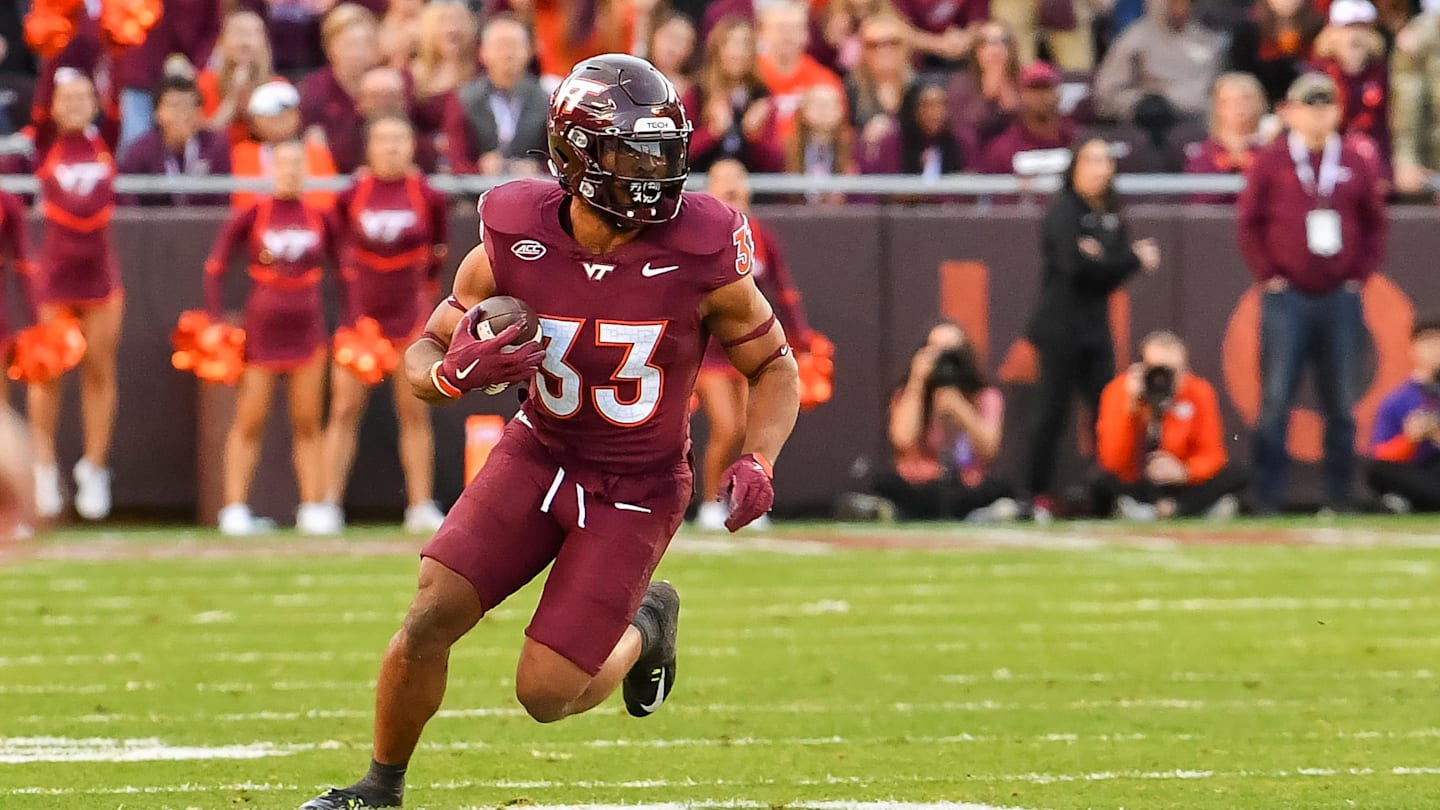
The rivalry matchup between Virginia Tech and Virginia is nearly 48 hours away and it is a big matchup for both teams. The Hokies and the Cavaliers are both 5-6 and needing a win to make a bowl game. The loser will be getting a headstart on 2025 instead of playing in the postseason.
At the start of the year, Virginia Tech was being talked about as one of the biggest surprise teams not just in the ACC, but in the country. This team’s biggest goals have gone away, but they still have an opportunity to reach a bowl game for the second straight season. That should still be a big deal to the program, but on the other side, the Cavaliers are trying to make a bowl game for the first time under Tony Elliott. They are going to be fired up about playing in this game and having a chance to make a bowl game, so Virginia Tech can’t take it for granted, no matter their past success vs Virginia.
So what are the keys to a win for Virginia Tech on Saturday?
Before you could even blink on Saturday night, Virginia Tech was trailing Duke 14-0 thanks to two long touchdown plays and the Blue Devils have not been a very explosive offense this season. Virginia has found a way to put points on teams like Clemson and Louisville this season and has improved since last year. The Hokies’ pass rush was non-existent on Saturday vs Duke, finishing with no sacks and being unable to disrupt Duke quarterback Maalik Murphy. They will have to be able to play better on Saturday if they want to avoid the upset.
It is still up in the air who is going to play quarterback for the Hokies on Saturday night, but whoever it is would benefit from a big game from one of the nation’s best running backs. Tuten had 84 yards on 19 carries last week, but Virginia Tech might need more than that on Saturday when the face the Cavaliers.
Our own RJ Schafer wrote this about the quarterbavck situation heading into Saturday’s game:
“Brent Pry listed both Kyron Drones and Collin Schlee as questionable ahead of the historic matchup. He added that both will practice, although very limited, and they could “just be watching” from the sidelines.
Coach Pry also added that Virginia Tech is preparing four quarterbacks to be ready to play this weekend, including Davi Belfort, a freshman quarterback from Brazil, a country which could begin to be the future of American college football.
Whoever plays this weekend is going to have to have to manage the game and not turn the ball over. I think the offense is going rely on the run game heavily this weekend due to that.
Additional Links:
Virginia Tech Football Releases Depth Chart Ahead of Matchup Against Virginia
Virginia Tech Football: PFF Grades and Snap Counts For Every Player in Saturday’s Loss to Duke
Virginia Tech Football: Updated Bowl Projections For The Hokies Heading Into Final Game
Virginia
Big Tests On The Horizon For Virginia Tech Wrestling – FloWrestling

At 3-0 with marquee victories over #6 Missouri (23-10) and #21 Rutgers (26-11), as well as a second-place finish in the Keystone Open with just a handful of starters competing, Virginia Tech has swept through a tough November and is prepared for a difficult December.
The Hokies, #12 in Flo’s team tournament ratings but top 10 in various dual-meet rankings, are next scheduled for an annual trip to Las Vegas for the Cliff Keen Invitational, featuring 27 teams, of which 14 are among Flo’s top 25. And then it’s another trip west to Stillwater on Dec. 19 to challenge #5 Oklahoma State in a rare Thursday match.
The early key thus far for the Hokies has been the ability to win the bouts they’re supposed to win and grabbing a fair share of so-called toss-up bouts.
To wit, Tech’s #18 Sam Latona downing Missouri’s #13 Josh Edmond (4-2) at 141, or #25 Rafael Hipolito majoring the Tigers’ #32 James Conway (11-3) at 157 and #15 Jimmy Mullen stopping #20 Seth Nitzel (4-2) at heavyweight.
That trend continued at Tech’s Moss Arts Center match against #21 Rutgers when Latona used a late takedown to defeat Joey Olivieri 7-5, #4 Lennox Wolak pinned veteran Jackson Turley at 174 and #9 Andy Smith slipped past #17 John Poznanski 4-3 at 197.
Hokies coach Tony Robie only took a few regulars to the Keystone Open in Philadelphia and, led by championship efforts by #1-ranked Caleb Henson at 149 and heavyweight Hunter Catka, Tech placed second behind Lock Haven. Latona placed third at 141 and Sam Fisher did the same at 184.
Robie opted to use the Hokies’ roster as freshmen Dillon Campbell (125), Matt Henrich (157), Luke Robie (157) and Jack Bastarrika (133) competed as did redshirt juniors Jackson Spires (165) and Ty Finn (174). Spires placed second.
Who’s Ready For Change?
With legislation on the NCAA’s table affecting scholarship and roster limits — unlimited scholarships and a roster cap — as well as revenue sharing, some college wrestling programs likely have a serious dose of trepidation while others are confident they can deal with whatever happens.
Virginia Tech sits in the latter category.
“I have no concerns whatsoever about that,” Robie said earlier this month. “I think a lot of it probably will happen. It’s hard to say whether it’s good or bad for the sport; that’s not really for me to say. What I will say is you have to adjust with what the rules are and what the landscape of college athletics looks like, and that’s what we intend on doing.
“Is it good for the overall health of the sport of wrestling? The kid that’s the 35th kid on your roster? Probably not. But I think definitely there were probably some things that needed to change; the pendulum was starting to swing significantly the other way. At some point, it’ll probably start to go back to the middle.”
Robie said all anyone can do is wait for the final decisions.
“We have some contingency plans based on what we think is going to happen and we’ll move forward with our plan and try to execute it,” he said.
A Pretty Good Gig
Robie, in his eighth year as head coach, has been at Tech since 2006 and as each season passes, the commitment and enthusiasm remain the same.
“Well, you get to do what you like to do. And it’s a pretty cool thing to be able to coach wrestling for a living and be a part of a pretty good program, and work with some great people and try to affect the lives of the kids in your program,” he said.
“I think anybody would want to do that. For me, I’m not young anymore. I turned 50 … who knows how long I’m going to do it, but I’m going to give it the best I can while I’m doing it and hopefully continue to improve as a program and try to try to help these guys as much as possible. But it’s good, Virginia Tech’s a great place to work, it’s a great place to live. I’ve got a great staff and it makes my life pretty easy.”
-

 Science1 week ago
Science1 week agoTrump nominates Dr. Oz to head Medicare and Medicaid and help take on 'illness industrial complex'
-

 Health6 days ago
Health6 days agoHoliday gatherings can lead to stress eating: Try these 5 tips to control it
-

 Health3 days ago
Health3 days agoCheekyMD Offers Needle-Free GLP-1s | Woman's World
-

 Science3 days ago
Science3 days agoDespite warnings from bird flu experts, it's business as usual in California dairy country
-

 Technology2 days ago
Technology2 days agoLost access? Here’s how to reclaim your Facebook account
-

 Science1 week ago
Science1 week agoAlameda County child believed to be latest case of bird flu; source unknown
-

 Sports1 week ago
Sports1 week agoBehind Comcast's big TV deal: a bleak picture for once mighty cable industry
-

 Entertainment21 hours ago
Entertainment21 hours agoReview: A tense household becomes a metaphor for Iran's divisions in 'The Seed of the Sacred Fig'

